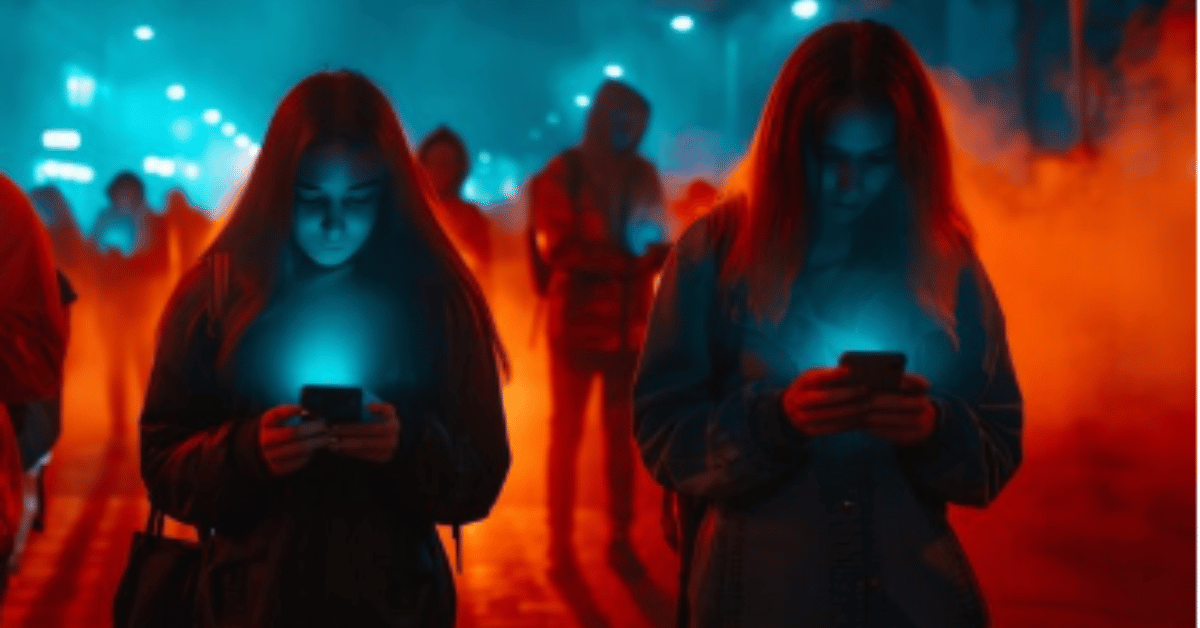In an era defined by hyperconnectivity, “Blackout Social” is an emerging cultural and psychological countertrend that encourages intentional digital silence. Whether adopted temporarily during high-stress periods or embraced as a lifestyle choice, Blackout Social represents a conscious withdrawal from online social platforms. It’s not just a detox; it’s a growing philosophical and behavioral movement questioning the role of constant online presence. If you’re looking to understand what Blackout Social means, how it’s changing social behaviors, and what implications it has for individuals and institutions, this article provides a complete exploration.
Conceptual Framework
Blackout Social refers to a deliberate disconnection from social media and online communities for mental clarity, privacy, or ideological reasons. While its roots intersect with digital detox, Blackout Social has evolved into its own concept—one that frames online silence as resistance, self-preservation, or artistic choice. It is a response to the overwhelming saturation of digital noise, attention economics, and the rise of performative identity in online spaces.
Origins and Evolution of Blackout Social
Blackout Social emerged as a subtle offshoot of the digital wellness movement. Early adopters were not celebrities or influencers but disillusioned Gen Z and Millennials, tired of virtual perfectionism. The term gained momentum during global crises when people needed space from sensationalized news feeds and algorithmic manipulation. It wasn’t just about unplugging—it was about reclaiming mental space.
Timeline of the Evolution:
2012–2016
Early signs of digital fatigue as platforms push algorithmic feeds and push notifications.
2017–2020
Rise of minimalism, mindfulness, and silent retreats, pushing digital minimalism to the forefront.
2020–2022
Pandemic-driven screen overload causes widespread social fatigue. Blackout Social becomes a coping tool.
2023–Present
Blackout Social emerges as a standalone movement with cultural relevance, journalistic attention, and even academic focus.
Why People Are Going Dark: Psychological Triggers
People don’t just vanish from social media randomly. The motivations are layered, often intersecting psychological distress, emotional overload, and identity fatigue. Common triggers include:
Social Comparison
Endless curated lives create a distorted sense of inadequacy.
Performance Anxiety
Pressure to post, respond, and react becomes a full-time job.
Attention Fragmentation
Constant scrolling fragments focus, weakening cognitive control and emotional regulation.
Emotional Burnout
Exposure to collective trauma, negativity, or performative wokeness contributes to emotional fatigue.
Paranoia and Surveillance Concerns
Users feel over-monitored and algorithmically profiled, leading to distrust and silence.
Technological Burnout and Cognitive Overload
Burnout is no longer limited to workplaces. Cognitive scientists have identified that constant digital engagement affects neural plasticity, memory, and decision-making. Blackout Social becomes a form of cognitive decluttering. By exiting the feed, users regain bandwidth—mentally, emotionally, and behaviorally.
Blackout Social vs. Digital Detox: Key Differences
Despite overlaps, Blackout Social and digital detox are conceptually different.
| Feature | Blackout Social | Digital Detox |
|---|---|---|
| Motivation | Psychological or ideological | Health-focused or productivity-oriented |
| Duration | Open-ended or indefinite | Usually temporary (days/weeks) |
| Execution | Total withdrawal from social platforms | Controlled access or reduction |
| Intent | Silence as signal | Silence as therapy |
| Community Perception | Viewed as radical or rebellious | Seen as mainstream self-care |
Case Studies and Individual Stories
Isla R., 24, Artist
“I left Instagram not because I hated it—but because I didn’t know who I was without it. After 6 months off, I started painting again—without thinking about whether it would be liked or shared.”
Jordan K., 31, Software Engineer
“A week off became a year. I realized how much my attention was hacked. Now, I write letters instead of DMs.”
These stories reflect the nuanced journey of self-recovery many face after stepping back from the algorithmic vortex.
Social Algorithms and the Need for Silence
Much of the online world is powered by social algorithms designed to predict and extend user engagement. From personalized feeds to push notifications, the internet rewards our attention while draining it. Blackout Social acts as a natural resistance mechanism—a refusal to feed the machine.
How Blackout Social Affects Online Communities
When users go dark, it’s not just a personal shift—it alters the rhythm of online communities. Influencers lose visibility. Brands experience drops in engagement. Discussion threads lose their vitality. Communities become more transactional or echo chambers when thoughtful voices disappear.
Institutional Use of Blackout Periods
Interestingly, organizations are now adopting Blackout Social periods. Some creative agencies have built “no-post” policies during brainstorming weeks. Schools and universities test platform-free days. Even political campaigns are experimenting with quiet periods to foster intentional messaging instead of reactive discourse.
The Marketing Industry’s Response
In a world dependent on metrics, Blackout Social presents a commercial challenge. Influencer campaigns, engagement targets, and paid ad strategies depend on users being online. As more people embrace silence, brands are shifting from frequency to depth—fewer posts, more meaningful content.
Marketing pivots observed include:
Micro-campaigns
Designed to spark engagement even with fewer daily active users.
Offline integration
Merging digital branding with physical experiences like pop-ups or real-world storytelling.
Platform diversification
Relying less on Instagram or TikTok; exploring newsletters, podcasts, and private forums.
Cultural Shifts and Social Rebellion
There’s a cultural rebellion embedded in Blackout Social. For younger generations, it mirrors past countercultures. Just as punk resisted pop and minimalists resisted consumerism, Blackout Social resists noise, surveillance, and commodified selfhood.
Data: Impact Metrics from Offline Periods
Based on recent behavioral studies and digital anthropology projects (non-commercial research):
| Metric | Observed Change During Blackout |
|---|---|
| Sleep Quality | Improved by 27% on average |
| Anxiety Levels | Decreased in 65% of participants |
| Productivity | Rose by 23% in most reported cases |
| Time Spent Reading | Increased by 40% |
| Real-world Social Interaction | Improved in depth, not quantity |
These numbers point toward meaningful shifts—not just surface-level improvements.
Risks and Downsides of Prolonged Blackout
While the benefits are widely reported, prolonged Blackout Social can have side effects:
Isolation
Cutting off entirely may reduce access to social support systems.
Professional Gaps
In industries where visibility is currency, absence might mean missed opportunities.
Social Misinterpretation
Others may misread digital silence as anger, depression, or rejection.
Reintegration Anxiety
After long periods offline, returning can be overwhelming and even distressing.
Creating a Personal Blackout Plan
Not every Blackout needs to be drastic. A gradual and strategic approach often yields better long-term results.
Step 1: Audit
List every platform, how much time you spend, and what it gives or takes from you.
Step 2: Purpose Identification
Decide why you need a blackout—mental health, focus, spiritual alignment?
Step 3: Communicate
Let close friends or collaborators know you’re stepping back to avoid misunderstandings.
Step 4: Replace
Have non-digital activities ready: books, walks, sketchpads, journaling.
Step 5: Observe
Track changes in mood, sleep, and productivity. Keep a log.
Step 6: Re-enter, if desired
Come back with boundaries, filters, and a new mindset.
Blackout Tools, Apps, and Settings
Ironically, technology helps manage tech disengagement. Tools that support Blackout Social:
Freedom App
Blocks sites or platforms across all devices.
One Sec
Forces a pause before opening addictive apps—encouraging mindful decisions.
Digital Wellbeing (Android) / Screen Time (iOS)
System-level tools for monitoring and limiting usage.
Timeboxed Phones
Minimalist phones that allow calls and texts, but nothing else.
Conclusion: Towards a More Balanced Digital Future
Blackout Social is not a rejection of the internet—it’s a recalibration. As our lives move increasingly online, finding balance becomes essential. Silence is no longer a void—it’s a decision, a statement, and sometimes, an act of defiance. Whether you’re overwhelmed, curious, or simply tired, Blackout Social offers a chance to breathe. In choosing silence, we may actually be rediscovering ourselves—not as avatars, but as people again.
FAQs
Is Blackout Social the same as deleting your social media?
No. Blackout Social can include temporary disconnection or selective muting—it doesn’t require full deletion.
How long should a Blackout Social period last?
There’s no fixed length. Some go dark for a weekend, others for months. The goal is intentional withdrawal.
What if my job depends on social media?
Create partitioned time. Use scheduling tools. Blackout Social is flexible—it doesn’t have to be all-or-nothing.
Can Blackout Social affect relationships?
Yes, especially if done without communication. Let close ones know your intent to avoid confusion.
Are there alternatives to a full blackout?
Yes—digital minimalism, notification silencing, screen-free hours, or platform-specific logouts offer gradual change.











